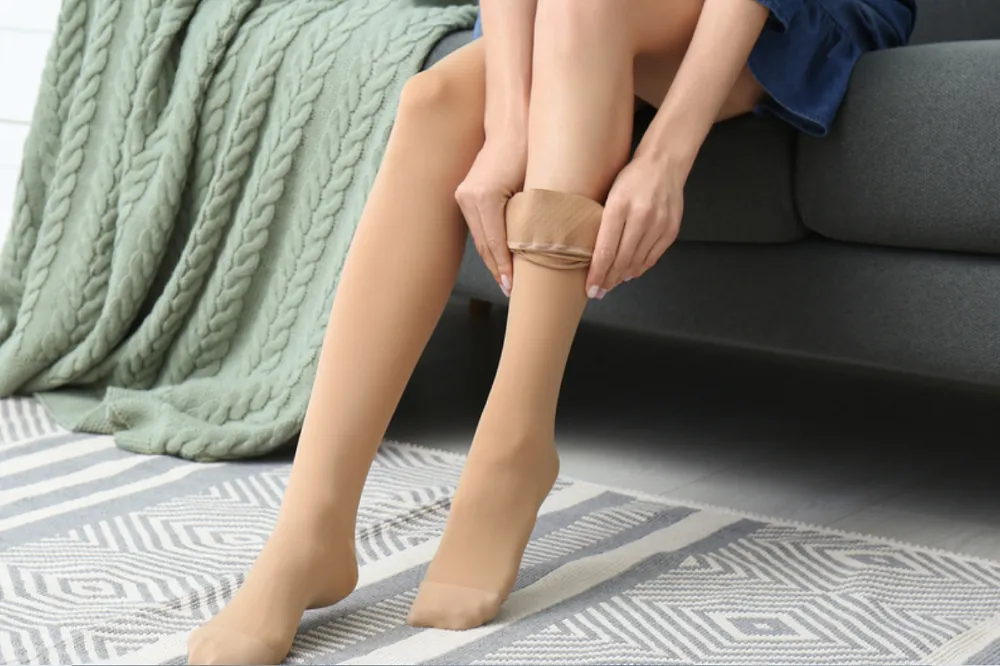A common condition affecting millions of people every year, Chronic Venous Insufficiency (CVI) is a venous disorder that affects the veins of the legs making it difficult for the blood to flow back to the heart.
This leads to increased pressure on the legs and often leads to swelling of the legs.[1]
CVI is a progressive condition which means symptoms vary depending on the stage of the condition. Understanding the different stages of CVI is, thus, important to better understand the condition and to address it. The stages of venous disorders range from 0 to 6 and are as follows:[2]
Stage 0: Mild Discomfort in Legs
The first stage of CVI does not reveal any physical symptoms as such. However, you may feel symptoms such as tired or aching legs.
Stage 1: Spider Veins and Reticular Veins[3]
The stage of CVI begins with the veins. Some may notice the appearance of spider veins or reticular veins. These are small, dilated blood vessels visible near the skin’s surface, typically forming a web-like or branching pattern. They may cause mild discomfort, such as itching or aching legs.
Stage 2: Varicose Veins[4]
Varicose veins are enlarged, twisted veins that protrude above the skin’s surface, typically appearing blue or purple. Varicose veins can cause symptoms like pain, throbbing, heaviness, and a sensation of tiredness or fatigue in the legs. Discomfort may worsen after long periods of standing or sitting.
Stage 3: Edema[5]
People with more advanced levels of CVI experience edema, or swelling, as a common symptom. Swelling often occurs in the ankles and lower legs due to fluid retention caused by the impaired blood flow in the veins. The affected areas may feel tight, heavy, and tender to the touch.
Stage 4: Skin Changes[6]
In the most severe cases of CVI, the skin around the affected area can undergo significant changes. The skin may become discolored, typically turning a reddish-brown or dark shade. The accumulated blood may also lead to inflammation by an itchy red rash.
Stage 5: Ulcer[7]
Ulcers, also known as venous stasis ulcers, are open sores that can be painful and take a long time to heal. These ulcers are formed due to skin tissue breakdown in the leg.
Stage 6: Active Ulcer[8]
If left untreated, ulcers can become infected and further complicate the condition taking you to the last stage of CVI.
Unfortunately, no amount of treatment can reverse the damage to the veins and once CVI is contracted, it is a lifelong condition. However, treatment and medication can reverse the symptoms and lead to better quality of living.[9]
Esenvia® is and over the counter medication that relieves signs and symptoms of varicose veins, such as pain, swelling, burning sensation, heaviness of the legs, and spider veins.[10]
This product may not be right for you. Please read and follow the label before use. Esenvia® is a registered trademark owned by Norwell Consumer Healthcare Inc.
REFERENCES
[1,9] Chronic Venous Insufficiency (CVI)
Cleveland Clinic
https://my.clevelandclinic.org/health/diseases/16872-chronic-venous-insufficiency-cvi
[2] Chronic Venous Insufficiency (CVI)
Cleveland Clinic
https://my.clevelandclinic.org/health/diseases/16872-chronic-venous-insufficiency-cvi#:~:text=You%20may%20feel%20symptoms%20like,swelling)%20but%20no%20skin%20changes
[3] Spider Veins
NIH
https://www.ncbi.nlm.nih.gov/books/NBK563218/
[4] Varicose Veins
Cleveland Clinic
https://my.clevelandclinic.org/health/diseases/4722-varicose-veins
[5] Chronic Venous Insufficiency AHA Journals
https://www.ahajournals.org/doi/10.1161/circulationaha.113.006898
[6] The Nature of Skin Pigmentations in Chronic Venous Insufficiency: A Preliminary Report
Science Direct
https://www.sciencedirect.com/science/article/pii/S1078588407005333
[7,8] Venous Ulcer
Cleveland Clinic
https://my.clevelandclinic.org/health/diseases/23165-venous-ulcer





